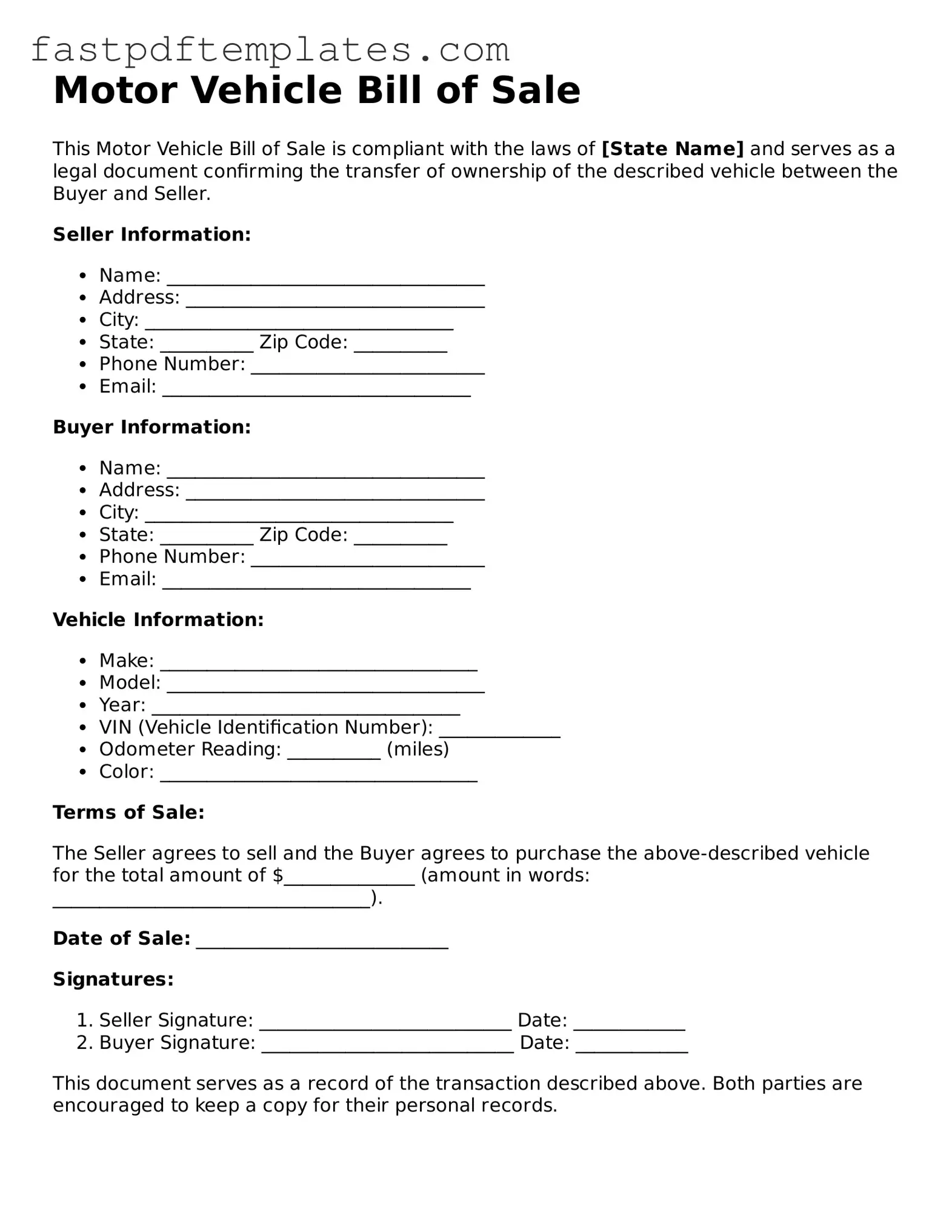The Motor Vehicle Bill of Sale form is similar to a general Bill of Sale, which is a legal document used to transfer ownership of personal property from one party to another. This document outlines the details of the transaction, including the names of the buyer and seller, a description of the item sold, and the sale price. Like the Motor Vehicle Bill of Sale, a general Bill of Sale serves as proof of the transaction and can be useful in resolving disputes over ownership or payment.
Another document that shares similarities is the Boat Bill of Sale. This form is specifically designed for the sale of boats and includes information such as the vessel's identification number, make, model, and year. Both the Boat Bill of Sale and the Motor Vehicle Bill of Sale serve the same purpose: to provide a record of the transaction and protect the interests of both the buyer and seller in case of future legal issues.
The Motorcycle Bill of Sale is also comparable to the Motor Vehicle Bill of Sale. It details the transfer of ownership of a motorcycle, including essential information like the Vehicle Identification Number (VIN), make, model, and year. Both documents aim to facilitate the legal transfer of ownership and provide evidence of the transaction, ensuring that both parties have a clear record of the sale.
A similar document is the RV Bill of Sale, which is used for the sale of recreational vehicles. This form includes specific details about the RV, such as its VIN, make, model, and any included accessories. Just like the Motor Vehicle Bill of Sale, the RV Bill of Sale serves as a legal record of the transaction, protecting both the buyer and seller by documenting the terms of the sale.
The Aircraft Bill of Sale is another document with a purpose akin to that of the Motor Vehicle Bill of Sale. This form is used to transfer ownership of an aircraft and includes information such as the aircraft's registration number, make, model, and year. Both documents are essential for establishing legal ownership and ensuring that all parties involved have a clear understanding of the transaction.
The Real Estate Purchase Agreement shares some similarities with the Motor Vehicle Bill of Sale, although it pertains to real property instead of personal property. This document outlines the terms of a property sale, including the purchase price, property description, and closing date. Both documents serve to formalize a transfer of ownership and provide legal protection for the parties involved.
Lastly, the Personal Property Bill of Sale can be compared to the Motor Vehicle Bill of Sale. This document is used for the sale of various types of personal property, such as furniture or electronics. It includes details about the item being sold, the sale price, and the buyer and seller's information. Like the Motor Vehicle Bill of Sale, it serves as a record of the transaction, ensuring that both parties have a clear understanding of the sale's terms.
